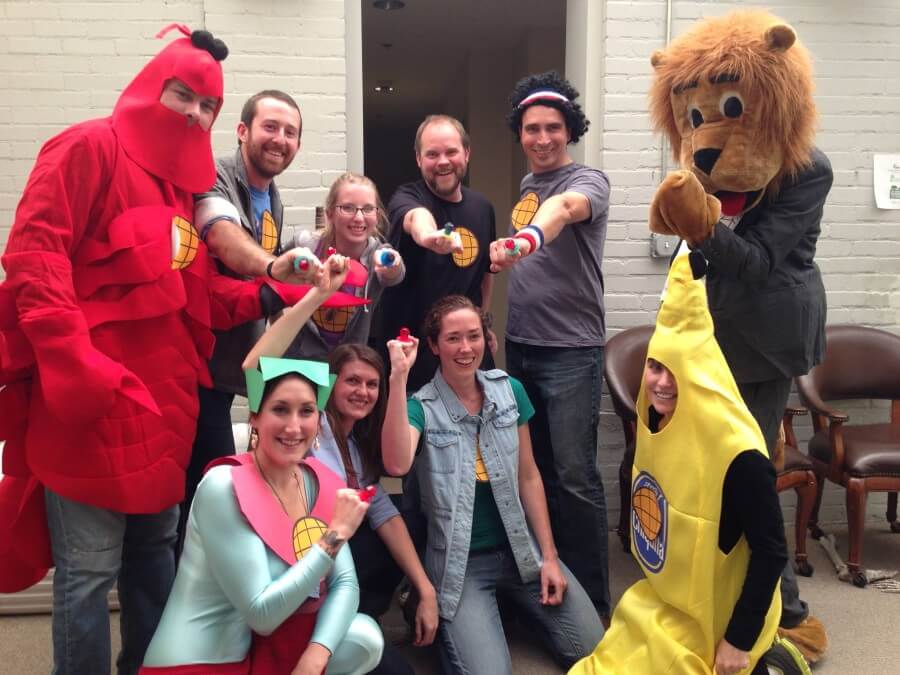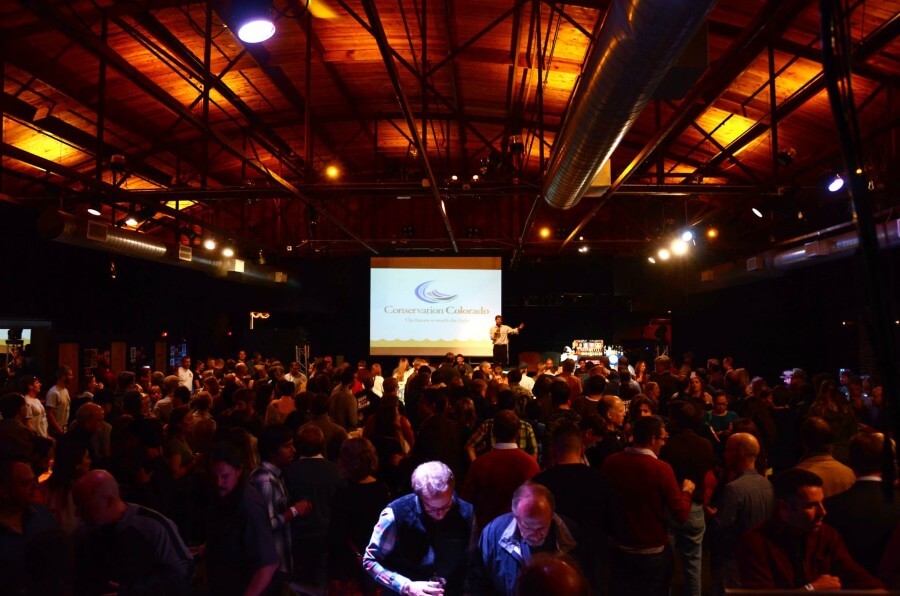Written by Conservation Colorado staff
Outdoor recreation in a warming world is not getting easier. Shorter, warmer winters hurt ice climbing and skiing, while reduced snowmelt is challenging for fishing and whitewater sports. Hot summers push climbers and hikers into the fall and spring, increasing the risk of running out of daylight.
Colorado Springs reflects many of the impacts of climate change on recreation seen across the state. For example, there was a ski hill at the Broadmoor until 1991, which is almost inconceivable to many newer residents to the Front Range. Ice climbing routes at popular local spots such as Silver Cascade are getting more and more unpredictable. And diminishing snowpack means less spring runoff, making whitewater sports difficult.
All of these things are on the mind of David Crye, Assistant Director of Colorado College’s Office of Outdoor Education in Colorado Springs. He helps organize skiing, climbing, rafting, and backpacking trips for students. Climate change affects his job, just as it threatens all of Colorado’s outdoor businesses, ski companies, and weekend warriors. Outdoor recreation is a huge part of the draw of Colorado College, so the program is important for administrators as well as for students.
David’s job revolves around planning educational outings for the students at Colorado College. This is getting challenging as Colorado’s fickle seasons become even harder to predict.
Hit-and-miss seasons for kayaking or ice climbing trips are frustrating for students and staff alike. When students are researching and proposing a trip, water or ice levels may be good–but when it comes to the day before the trip, conditions may have totally changed. This is frustrating for anyone trying to plan personal trips, but is especially problematic for structured programs like guiding businesses or school outings. These trips can’t easily be moved or rescheduled.
“Our programs exist to get people outside, expose them to nature and activities and find their place. College is about getting out trying out new things and learning – which isn’t always in the classroom,” explained David. With climate shifts causing fickle weather, students who were excited to learn about ice climbing or enjoy a scenic river may lose their chance.
While Colorado’s weather has always been reliably unreliable, climate change makes things even worse. This matters for outdoor programs, as David points out. “Outdoor education helps our community be more cohesive and more in-tune with the world and nature. If students aren’t getting out and experiencing nature, or seeing the changes that are happening, why would they even know or care to be an advocate for upcoming generations?”
Even historic trips are coming into question. Normally, Colorado College runs an Avalanche Safety course in mid-February. Last year, the snowpack was too low. Students got the same education in avalanche safety, but they missed out on the hands-on experience. David worries that these leaders may not actually have the experience needed to safely lead future trips, because their training took place in such bad snow.
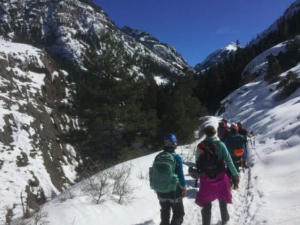 In short, climate change doesn’t just affect high alpine creatures, coastal communities, or big ski resorts. It affects almost all forms of outdoor recreation, threatening our seasons and making planning nearly impossible. Soaring temperatures and unpredictable weather events are a major headache for guides, outdoor enthusiasts, and outing programs.
In short, climate change doesn’t just affect high alpine creatures, coastal communities, or big ski resorts. It affects almost all forms of outdoor recreation, threatening our seasons and making planning nearly impossible. Soaring temperatures and unpredictable weather events are a major headache for guides, outdoor enthusiasts, and outing programs.
If current predictions hold true, what is now a major headache will soon become much more troubling. Boulder, Fort Collins, and Greeley were all recently named as cities that will be heavily affected by climate change. Greeley has seen one of the biggest increase in 100-degree days since 1970; Fort Collins is among the cities with the biggest increases in 90-degree days. Boulder is getting muggier – it’s ranked in the top three cities with the biggest dew point increase since 1970.
All these statistics show that you don’t have to be an ice climber to feel the effects of climate change. Daily bike commutes, summer runs, and walks with the dog could all change drastically.
Our multi-billion outdoor recreation economy is especially sensitive to the impacts of climate change. We can work to fix this by supporting good climate policy, electing leaders who make climate action a priority, and working on ways to limit our own personal use.

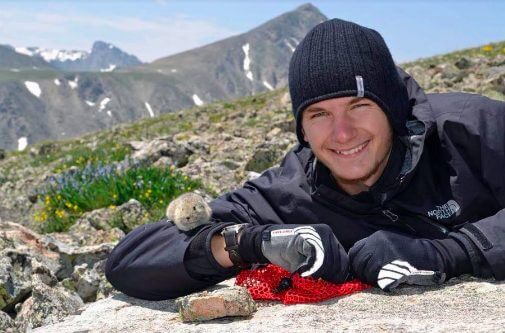
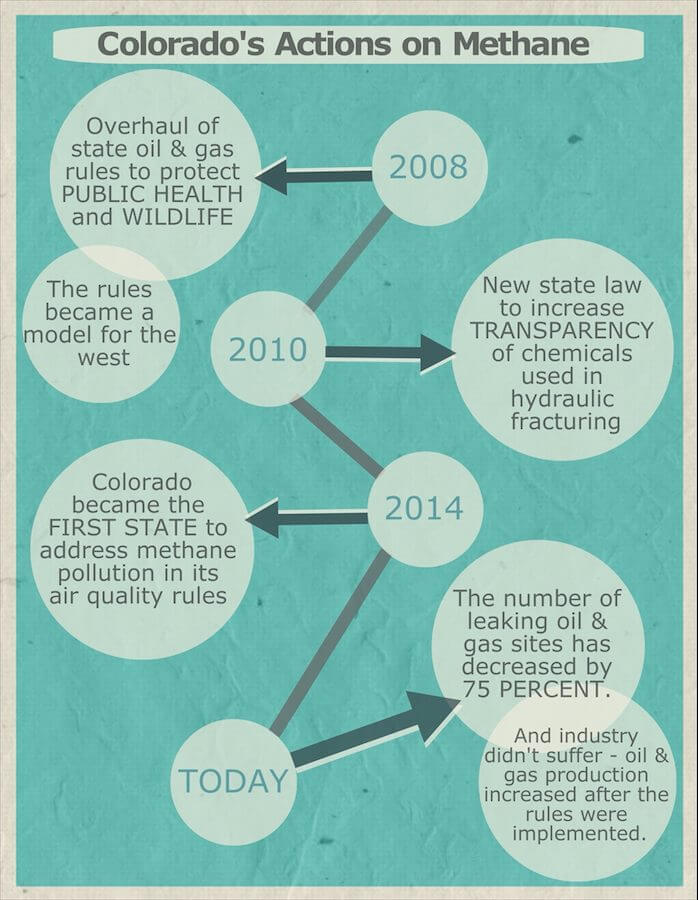 One in three Americans lives in a county with oil and gas operations, and right now, methane is leaking from over a million oil and gas wells. That’s over 7 million metric tons of methane spilling into the air each year – enough gas to heat 5 million American homes (at a cost of over $1 billion in lost methane).
One in three Americans lives in a county with oil and gas operations, and right now, methane is leaking from over a million oil and gas wells. That’s over 7 million metric tons of methane spilling into the air each year – enough gas to heat 5 million American homes (at a cost of over $1 billion in lost methane). The ten year long battle to protect the Roan Plateau is finally over. The conservation community finally won the fight to keep the 54,000 acre Roan Plateau from becoming an industrial zone.
The ten year long battle to protect the Roan Plateau is finally over. The conservation community finally won the fight to keep the 54,000 acre Roan Plateau from becoming an industrial zone.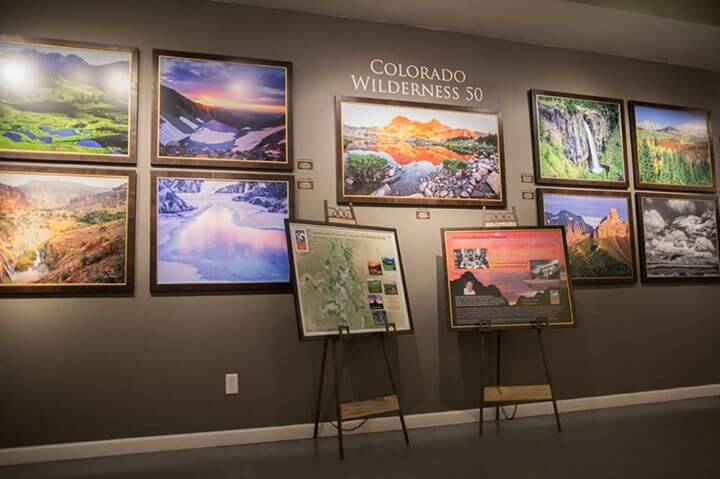 This year marked the 50th anniversary of the Wilderness Act, and boy, did we celebrate. We held events across the state from July to November to raise awareness about the 3.6 million acres of Colorado’s most sublime wildlands that are set aside as wilderness areas.
This year marked the 50th anniversary of the Wilderness Act, and boy, did we celebrate. We held events across the state from July to November to raise awareness about the 3.6 million acres of Colorado’s most sublime wildlands that are set aside as wilderness areas.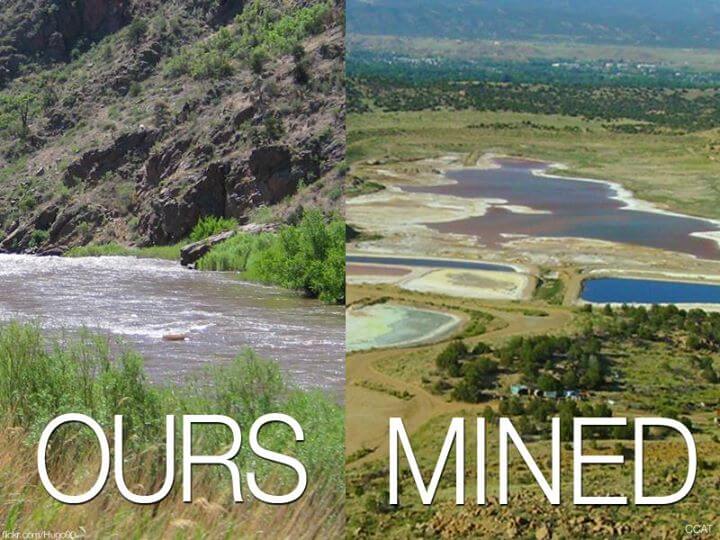 In April we were thrilled to help pass legislation that will finally clean up groundwater contamination in the Lincoln Park neighborhood of Canon City. After 30 years of pollution and indifference from Cotter Corporation, Coloradans living in its shadow were finally granted the right to clean water and use of their own water wells.
In April we were thrilled to help pass legislation that will finally clean up groundwater contamination in the Lincoln Park neighborhood of Canon City. After 30 years of pollution and indifference from Cotter Corporation, Coloradans living in its shadow were finally granted the right to clean water and use of their own water wells.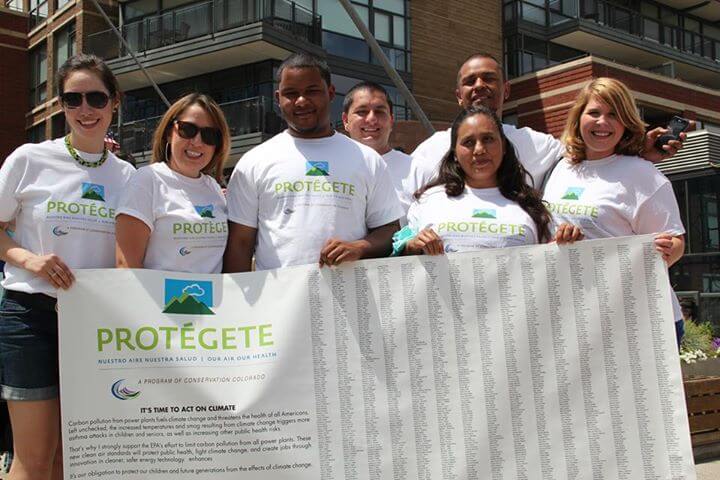 This year, Conservation Colorado launched Protégete: Our Air, Our Health. It is an important and timely effort to engage the Latino community around the issues of clean air and climate change.
This year, Conservation Colorado launched Protégete: Our Air, Our Health. It is an important and timely effort to engage the Latino community around the issues of clean air and climate change.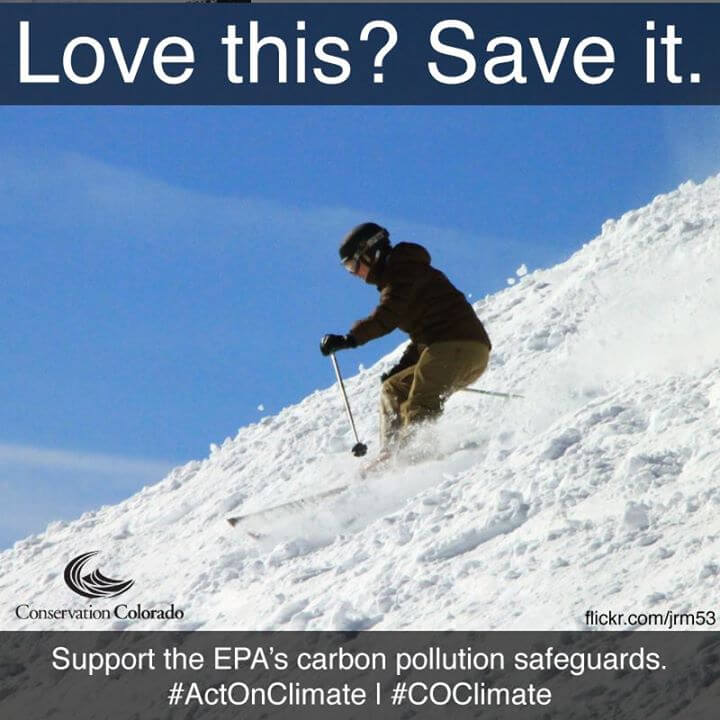 This year we took a huge step toward addressing the challenge of climate change. The Environmental Protection Agency (EPA) proposed national safeguards that aim to cut carbon pollution, One of just four hearings across the country was held right here in Colorado! Our coalition rallied over 250 Coloradans to testify at the hearings and came out on top — an overwhelming majority of the testimonies showed support of the EPA’s Clean Power Plan.
This year we took a huge step toward addressing the challenge of climate change. The Environmental Protection Agency (EPA) proposed national safeguards that aim to cut carbon pollution, One of just four hearings across the country was held right here in Colorado! Our coalition rallied over 250 Coloradans to testify at the hearings and came out on top — an overwhelming majority of the testimonies showed support of the EPA’s Clean Power Plan. Colorado sent a strong message to the nation in February – that every person deserves to breathe clean air. With your support, and after a year-long ground campaign, Colorado’s Air Quality Control Commission passed groundbreaking, first in the nation rules that directly regulate methane pollution from oil and gas facilities.
Colorado sent a strong message to the nation in February – that every person deserves to breathe clean air. With your support, and after a year-long ground campaign, Colorado’s Air Quality Control Commission passed groundbreaking, first in the nation rules that directly regulate methane pollution from oil and gas facilities.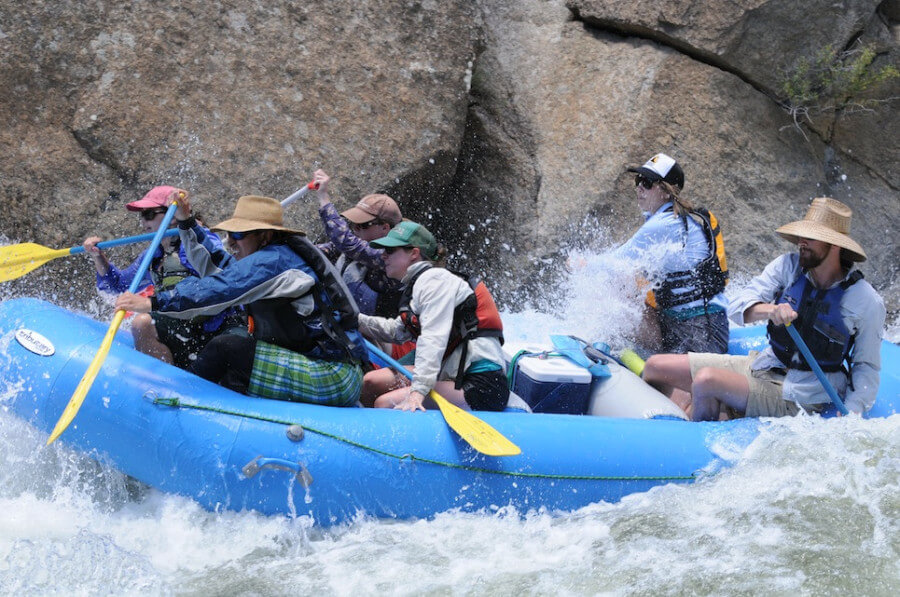
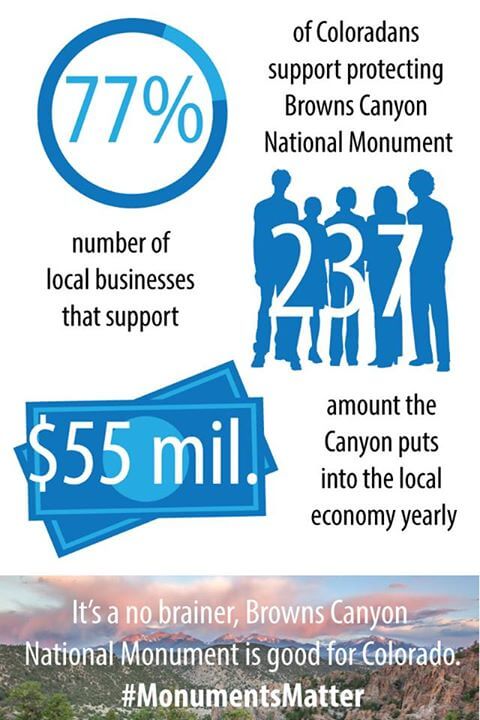 Conservation Colorado has worked with U.S. Senators Mark Udall and Michael Bennet for years to designate Browns Canyon as a national monument. This month, we brought this beautiful 22,000 acres of public lands around the Arkansas River to the forefront of President Obama’s attention and are optimistic that he will take the next step to finally protect Browns Canyon once and for all.
Conservation Colorado has worked with U.S. Senators Mark Udall and Michael Bennet for years to designate Browns Canyon as a national monument. This month, we brought this beautiful 22,000 acres of public lands around the Arkansas River to the forefront of President Obama’s attention and are optimistic that he will take the next step to finally protect Browns Canyon once and for all.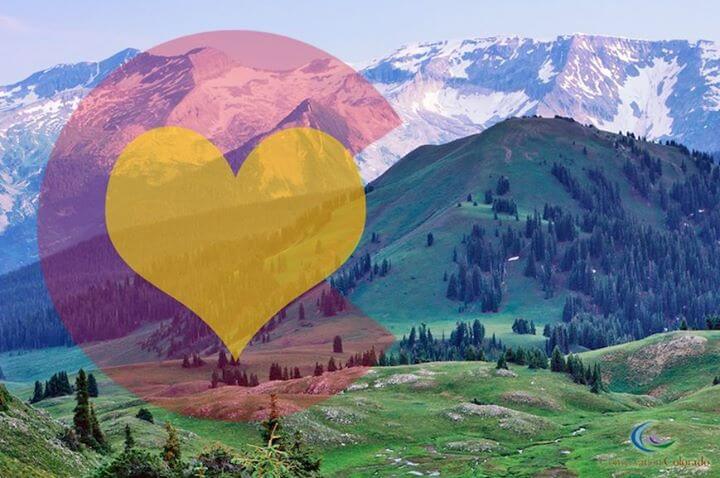 Conservation Colorado works hard to protect the land, air, and water of our beautiful state for YOU, our members. We are proud to have a growing membership of dedicated Coloradans who are willing to take action and support the work that will ensure clean air, healthy flowing waters, and protected lands for years to come. We do this work because we believe that it is your right to enjoy the outdoors as you see fit, without restrictions from out-of-state special interests and polluting industries. We do this work because of YOU.
Conservation Colorado works hard to protect the land, air, and water of our beautiful state for YOU, our members. We are proud to have a growing membership of dedicated Coloradans who are willing to take action and support the work that will ensure clean air, healthy flowing waters, and protected lands for years to come. We do this work because we believe that it is your right to enjoy the outdoors as you see fit, without restrictions from out-of-state special interests and polluting industries. We do this work because of YOU.
